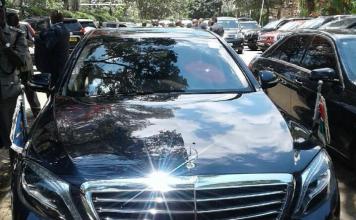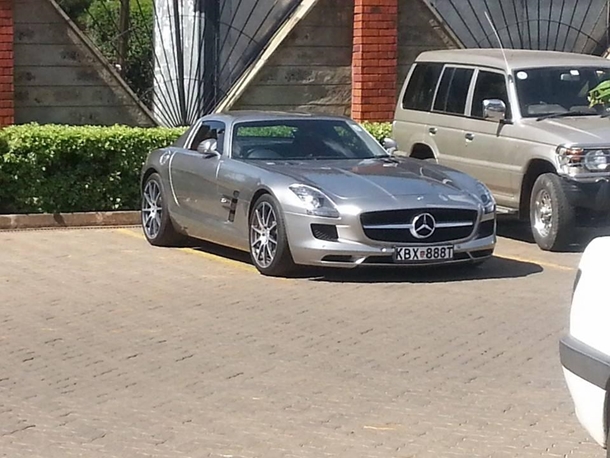It will cost you nearly half of what you pay to travel by bus from Nairobi to Mombasa in economy class on the new Standard Gauge Railway (SGR) for the first six months. This is as the Government prepares to release fares next week ahead of official launch on May 31.
Although the Government is tight lipped on the matter as consultants hired last month finalise the details, Transport Cabinet Secretary James Macharia has said the first six months would be used to gauge demand of the new line. “I don’t want to put the cart before the horse because there is a team working on this and we will make an announcement next week,” he told Weekend Business.
The consultants; Aarvee of India, Wanjohi & Mutonyi Consulting Engineers (technical), Equity Investment Bank (financial) and Amolo & Gacoka Advocates (legal) will on Monday meet officials of the Ministry of Transport and the Attorney General as preparations for the launch hit the homestretch.
With just nine days ahead of the big day, the challenge now is how to balance between making the Sh327 billion investment attractive to Kenyans while at the same time be economically viable. Rail transport in Kenya is widely seen as a mode of transport for the poor. An attempt to make commuter rail appealing to the middle class in 2015 through the Nairobi-Syokimau route flopped forcing Kenya Railways to slash fares and revert to the mass market model.
Repay Its Debts
But in most countries railway transport is largely run as a public service and is heavily subsidised by taxpayers in order to remain afloat. For Kenya, however, the new railway would still have to repay its debts while at the same time meet its operating costs. China funded 90 per cent of the construction costs through a loan.
A feasibility study done in 2011 had proposed a Sh4,500 fare for the project to be viable but it was rejected by the Government. The Government Friday ruled out making profits from the new railway service insisting it wanted the line to be an enabler of economic growth.
“We want to move people and cargo faster but also cheaper. That is how the economy will grow,” said the transport CS.
Before shutting down its passenger service between Nairobi and Mombasa, Rift Valley Railways (RVR) charged Sh4,405 for a one-way first class ride between the two cities. A ride in the second and economy classes cost Sh2,335 and Sh680 respectively.
Buses on the route charge Sh1,200 on economy, Sh1,800 VIP and Sh2,300 for Business Class. An economy class ticket from Nairobi to Mombasa by air during high traffic averagely costs Sh15,000 while budget airline Jambo Jet when booked a month in advance costs Sh4,200.
A team of 100 technocrats drawn from 13 ministries have been formed to work out the final details ahead of the launch which has been pushed forward by a day to May 31 instead of June 1. The team which is in Mombasa headed by the CS will today do a dry run by riding from Mombasa to Nairobi on the new line. “June 1 is a public holiday we don’t want to disrupt it,” said Mr Macharia.Vincent Achuka.
Buses on the route charge Sh1,200 on economy, Sh1,800 VIP and Sh2,300 for Business Class.
It will cost you nearly half of what you pay to travel by bus from Nairobi to Mombasa in economy class on the new Standard Gauge Railway (SGR) for the first six months. This is as the Government prepares to release fares next week ahead of official launch on May 31.
Although the Government is tight lipped on the matter as consultants hired last month finalise the details, Transport Cabinet Secretary James Macharia has said the first six months would be used to gauge demand of the new line. “I don’t want to put the cart before the horse because there is a team working on this and we will make an announcement next week,” he told Weekend Business.
The consultants; Aarvee of India, Wanjohi & Mutonyi Consulting Engineers (technical), Equity Investment Bank (financial) and Amolo & Gacoka Advocates (legal) will on Monday meet officials of the Ministry of Transport and the Attorney General as preparations for the launch hit the homestretch.
With just nine days ahead of the big day, the challenge now is how to balance between making the Sh327 billion investment attractive to Kenyans while at the same time be economically viable. Rail transport in Kenya is widely seen as a mode of transport for the poor. An attempt to make commuter rail appealing to the middle class in 2015 through the Nairobi-Syokimau route flopped forcing Kenya Railways to slash fares and revert to the mass market model.



![[PHOTOS] Top 20 Used Cars to Avoid Buying in Kenya](../../../blog/wp-content/uploads/2013/11/top-used-unreliable-cars-to-avoid2-80x60.jpg)



![[PHOTOS] Top 20 Used Cars to Avoid Buying in Kenya](../../../blog/wp-content/uploads/2013/11/top-used-unreliable-cars-to-avoid2-100x70.jpg)


